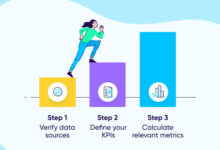Custom Healthcare Software Development Services: Tailoring Technology for Better Patient Care

In today’s healthcare landscape, the demand for tailored solutions that address unique challenges while enhancing patient outcomes has never been greater. Custom healthcare software development services play a crucial role in meeting these needs, offering specialized expertise in creating bespoke solutions that streamline operations, improve clinical workflows, and empower healthcare providers. This article explores the significance of custom healthcare software development services, their impact on the industry, and the innovative approaches driving their evolution.
Introduction: The Need for Custom Healthcare Software Solutions
Healthcare organizations face diverse challenges, ranging from interoperability issues and regulatory compliance to the need for enhanced patient engagement and operational efficiency. Off-the-shelf software solutions often fall short in addressing these specific needs, leading healthcare providers to seek custom software development services. These services cater to the unique requirements of healthcare settings, offering scalable, secure, and user-friendly solutions that align with organizational goals and regulatory standards.
Understanding Custom Healthcare Software Development Services
- Tailored Solutions for Healthcare Challenges: Custom software development services begin with a comprehensive analysis of the healthcare organization’s requirements, workflows, and pain points. Consultants collaborate closely with healthcare stakeholders to design and develop software solutions that address these specific challenges effectively.
- Integration with Existing Systems: Seamless integration with existing Electronic Health Records (EHR), Practice Management Systems (PMS), and other healthcare IT infrastructures is crucial. Custom software developers ensure interoperability and data exchange capabilities to optimize workflow efficiency and improve clinical decision-making.
- Focus on User Experience and Patient Engagement: User-centric design principles guide the development process, enhancing usability and accessibility for healthcare professionals and patients alike. Intuitive interfaces, mobile accessibility, and patient portals foster greater engagement and satisfaction, ultimately improving outcomes and adherence to treatment plans.
Impact of Custom Healthcare Software Development
Enhancing Clinical Efficiency and Quality of Care
Custom healthcare software development services contribute significantly to:
- Streamlining Workflows: By automating routine tasks, reducing paperwork, and minimizing administrative burdens, custom software solutions free up healthcare professionals to focus more on patient care.
- Clinical Decision Support: Integrated clinical decision support systems provide real-time insights, evidence-based guidelines, and alerts that enhance diagnostic accuracy and treatment efficacy.
Improving Patient Experience and Accessibility
- Telemedicine and Remote Monitoring: Custom software solutions enable virtual consultations, remote patient monitoring, and telehealth services, improving access to healthcare for patients in remote or underserved areas.
- Personalized Care Plans: Through data analytics and personalized medicine approaches, custom software supports tailored treatment plans that account for individual patient needs and preferences.
Ensuring Data Security and Regulatory Compliance
- Data Privacy and Security: Custom software developers implement robust security measures, encryption protocols, and compliance frameworks (e.g., HIPAA) to safeguard patient information against unauthorized access and breaches.
- Adherence to Regulatory Standards: Compliance with healthcare regulations and standards is prioritized throughout the development lifecycle, ensuring adherence to legal requirements and industry best practices.
Innovative Approaches and Future Trends
- Artificial Intelligence and Machine Learning: Integration of AI algorithms for predictive analytics, anomaly detection, and population health management.
- Blockchain Technology: Enhancing data integrity, transparency, and interoperability in healthcare transactions and patient records management.
- Internet of Medical Things (IoMT): Integration of IoT devices for real-time health monitoring, medical asset tracking, and patient engagement applications.
Challenges and Future Outlook
Addressing Challenges
- Complexity of Healthcare Ecosystem: Custom software developers navigate the intricate healthcare ecosystem, addressing interoperability challenges, diverse stakeholder needs, and evolving regulatory landscapes.
- Rapid Technological Advancements: Keeping pace with emerging technologies and evolving patient expectations requires continuous innovation and adaptive strategies.
Future Directions
As healthcare software development evolves, future trends include:
- Enhanced Interoperability: Continued efforts to improve data interoperability and integration across healthcare systems and devices.
- Advancements in Telehealth: Expansion of telemedicine capabilities and virtual care solutions to enhance accessibility and patient-provider interactions.
- Focus on Predictive and Preventive Healthcare: Leveraging AI and predictive analytics to shift towards proactive healthcare management and personalized interventions.
Conclusion: Driving Innovation in Healthcare Delivery
In conclusion, custom healthcare software development services represent a pivotal force in driving innovation, efficiency, and patient-centric care across the healthcare industry. By combining technical expertise with a deep understanding of healthcare dynamics, these services empower organizations to overcome challenges, improve outcomes, and achieve operational excellence. As healthcare continues to evolve, the role of custom software development in shaping a more connected, accessible, and responsive healthcare ecosystem cannot be overstated.






